How Do We Develop Our Compounds?
Your car’s finish is what makes the first impression and lets people know how much you value and appreciate your car. As such, it has got to be as smooth and sleek as possible. But it doesn’t take a car professional to understand that detailing isn’t just about the appearance and protection of your car’s surface. A truly remarkable polishing compound needs to counteract years of contact with chemical and physical stressors; fluctuations in temperature, UV rays, moisture, salt, etc., affecting your vehicle’s surface.
For professional detailers, the way the compound reacts in treatment, its ease of use, the amount of compound dust, etc. matter a great deal.
Can the compound be easily wiped off? How is the compound developed and produced? We’re giving you a sneak peek into our research and development processes to answer all of these questions.
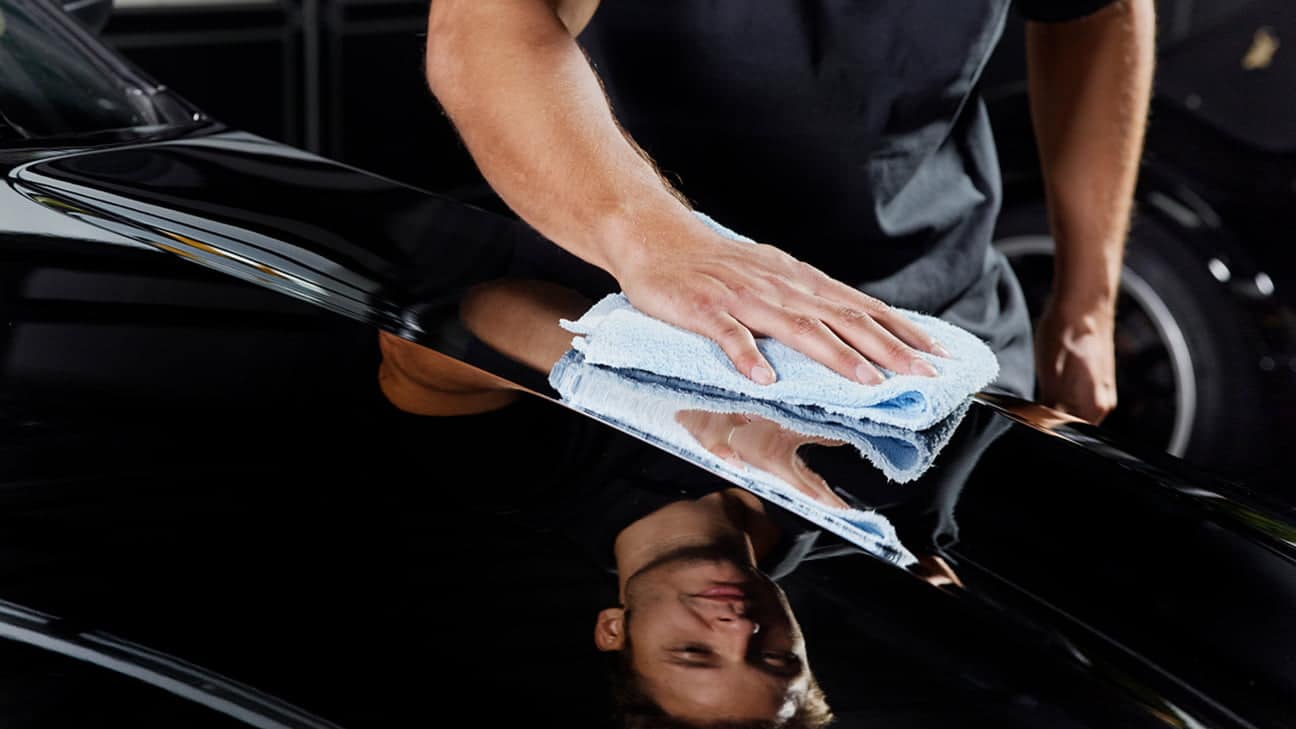
Something good got better
Any good polishing compound starts as a good idea. And that’s exactly what Dr. Michael Hauber aims to achieve leading and working alongside the development team at the Koch-Chemie headquarters in Unna — generate new ideas for professional quality.
It is not every research and development brainstorming session that leads to the creation of a completely new product. New outstanding polishing compounds are often created by small improvements of those already existing products. Over time, our customers can spot the difference getting more enhanced results faster.
It is exactly the moment Dr. Hauber & Co. would realize a successful change to their polish formula has been made. This brings us to another prerequisite for an outstanding polish — high-quality ingredients. Here at Koch-Chemie, we examine a variety of products from several different suppliers before choosing the finest base ingredients for our polishing compounds. The main ingredient of our polish is aluminum oxide, which ensures the removal of weathered and scratched paint layers.

Putting the theory to the test in the “Polish Technicum”
Let’s take a closer look at a typical day in the research and development department. Michael Hauber, Axel Schnarrenberger, and chemical laboratory technician Nico Rebbert are working together to further improve a polish. Their efforts are primarily directed toward eliminating the microscopic pits on painted surfaces affecting gloss levels. The central focus is the perfect combination of the finest ingredients to bring heavily-weathered paint surfaces back to life.
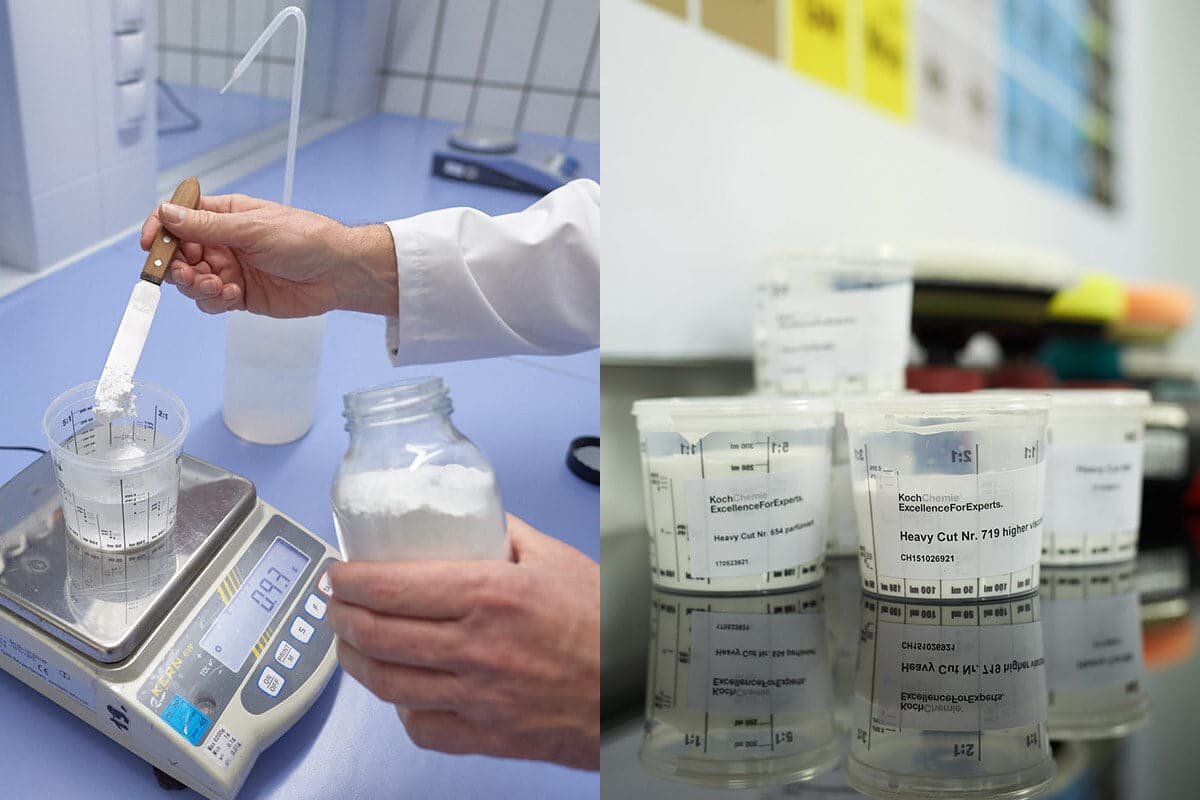
Precise and quantifiable science is what follows the preliminary deliberations. Aimed to develop a polish that achieves a glossier surface faster, the team is to set the parameters to progress toward this goal.
Now that the parameters are all set, the team would mix various ingredients to make a prototype of a polish. Sometimes, the perfectly balanced mixture calls for adding a little bit extra of ingredients or even a particular mineral.
The team runs tests in a “polish technicum” to examine the prototypes with varying proportions of ingredients. This professional testing space is equipped with buffers, pads in all conceivable shapes and sizes, and excellent lighting of course. Central to it is a car and a few individual metal sheets – the test surfaces. Dark paints are known for their sensitivity, showing even the smallest of scratches, which is why the test surfaces are painted in the blackest blacks possible.
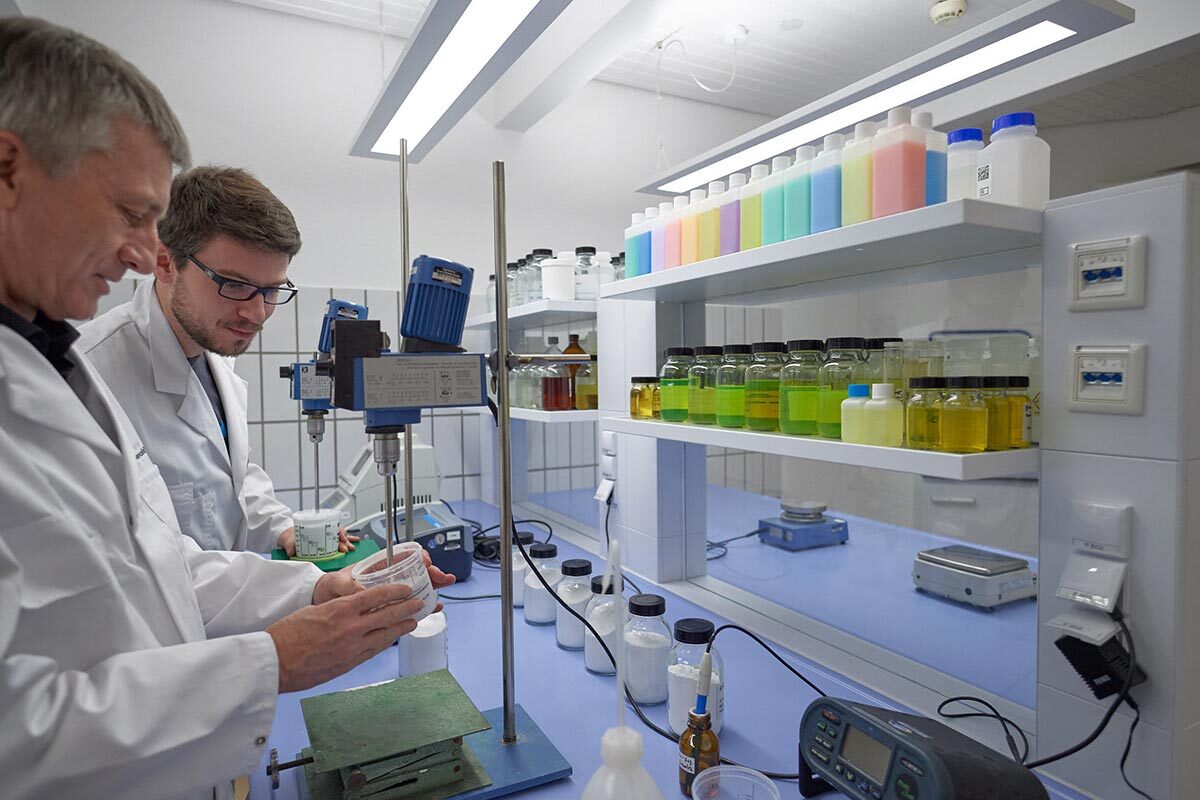
Putting theory to the test in the “Polish Technicum”
The team gets down to business and starts with destroying the mirror-smooth paint of the test objects. This is essential to achieve a starting point that matches real-life conditions: a weathered, painted surface covered in microscopic scratches. This is done with a 2000-grit Abralon pad.
Stretched over a pneumatic polisher, the pad turns the beautiful gloss of the black metal sheets into a dull matt. The team then applies test polish after test polish, bringing the dull, worn surface back to its high gloss shine.
Running these tests is central to the development of new polishes because each combination of ingredients shows varying results. The differences are small yet important. They are noticeable with a detailing light for paint correction and an expertly trained eye.
The development team uses multiple criteria to judge the quality of the polish, including but not limited to the time it takes to restore a dull finish to its former glory, the cut, the level of shine, the sleekness of the polished surface, etc.

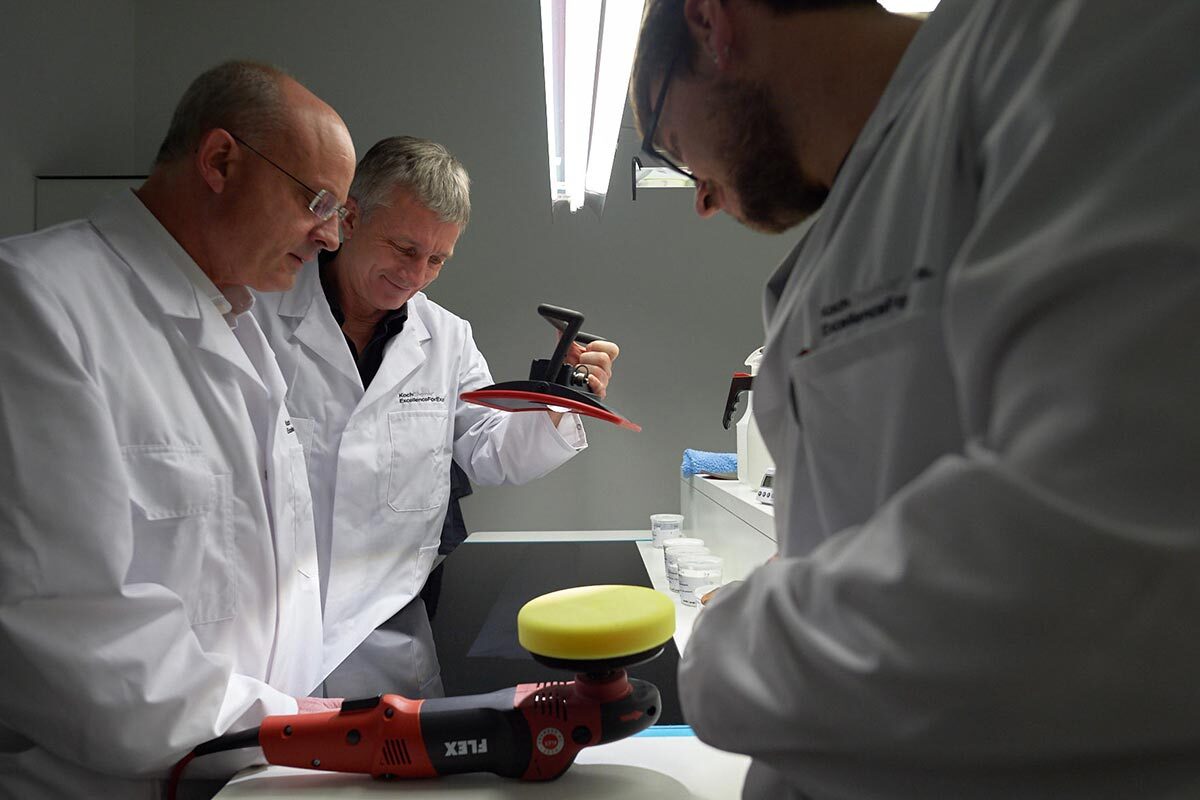
Making the cut
Only those products meeting the strictest of criteria make the cut. Let us keep it secret what exactly this entails, however, there is one thing we are happy to reveal. Even with over a decade of experience in concocting polishes, the development team would not come up with the perfect mixture right away. It does take a lot of stamina and patience to get a polish into mass production at Koch-Chemie.
After all, our clients are professionals impressed by high performance, not words. Only a well-developed product can achieve this.
The next step in the process is production. To learn more about it read the next article in the series.
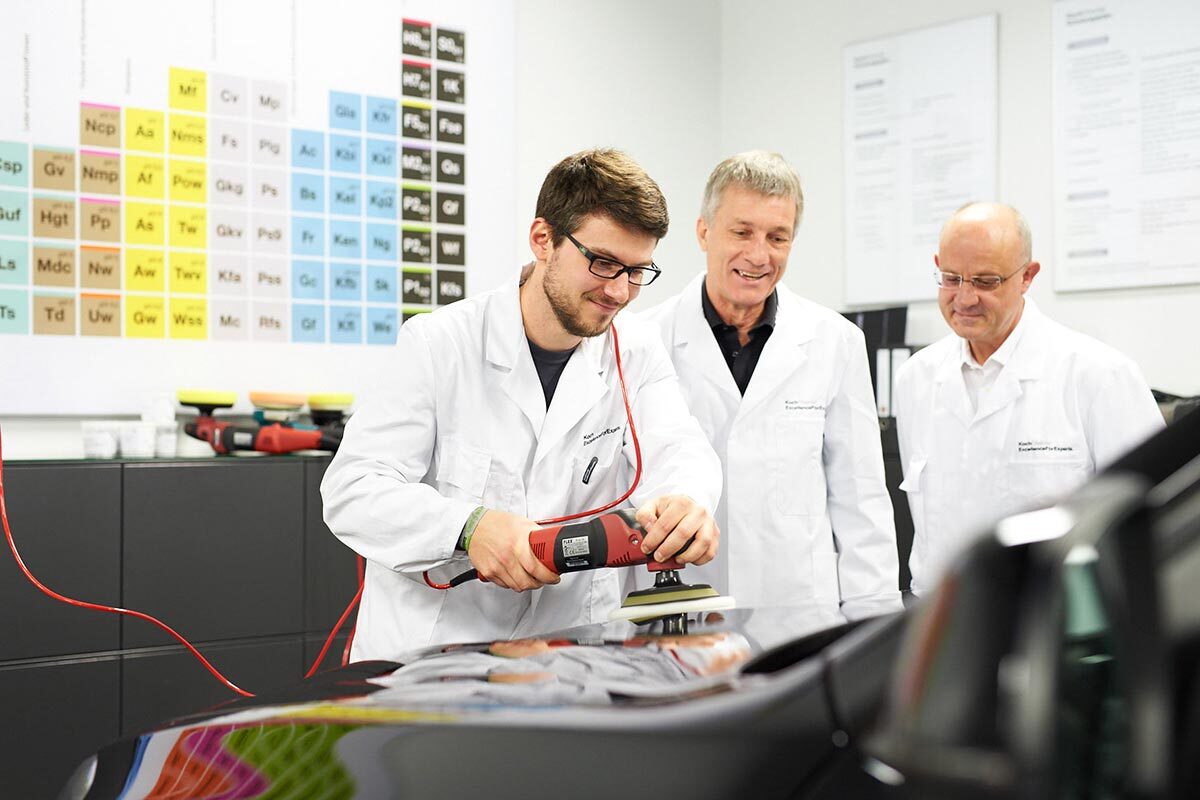
Comments
Comments
Related Articles
Related Articles
Hand Wax With Carnauba For a Special Hydrophobicity
If your vehicle needs special treatment, Hand Wax is the best product for high gloss and special hydrophobicity. High-quality Carnauba waxes ensure a long-lasting sealed and protected paint...
How to Clean and Conserve the Engine Bay Of Your Car
and We have a universal cleaner Green Star and the engine conserver Motorplast in our range as a powerful duo for a quick engine compartment preparation. The first step is to prepare the engine bay...
Koch-Chemie Polishing System
The development of new scratch-resistant paint systems is progressing, whilst car manufacturers keep coming up with new challenges related to polishing compounds` power and efficiency. The...

0 Comments